Light and sleep – or why we (usually) sleep at night
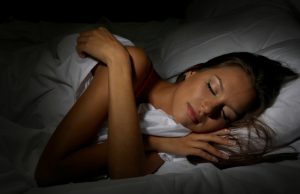
Sleep usually happens at night. For our ancestors, there were very practical reasons for this. Artificial light was expensive, high maintenance, and not without danger. Also, it was too dim for most kinds of work. Then Thomas Edison made electrical light affordable for daily use – and it was possible to work all night too. But even today most people still sleep during the night. Is this just a matter of culture or biological necessity?
Light influences our brain and thus controls our sleep-wake-cycle
Light is the most important influence on our sleep-wake-cycle. In our retina, intrinsic photosensitive retinal ganglion cells (ipRGCs) contain the pigment melanopsin. It absorbs short-wave light with a maximum around 470 nm, which is blue light, but not red light.
Without blue-rich light, the Nucleus suprachiasmatics (SCN) triggers the pineal organ to release melatonin. This is no immediate process. Instead, melatonin release starts some while after the begin of darkness with a delay, resulting in a phase shift. Maximum melatonin concentration is reached during the second half of the night, and melatonin is released until some time after sunrise.
Melatonin also has its own endogenous circadian rhythm. Under constant conditions it has a period length of slightly more 25 hours in humans, in other species it is either slightly longer or shorter than 24 hours. Every day, this rhythm is synchronised with the solar day via ipRGCs and SCN.
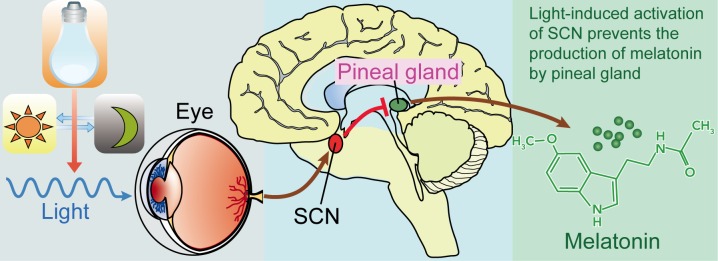
In case of a phase shift of the solar day, e.g. due to a journey between time zones, we need a few days to fully adjust. We call this a jet-lag. Also, light can directly supress the release of melatonin without changing the underlying rhythm, which results in a shorter release of melatonin.
Artificial light can confuse our brain – and can make us sick
The strongest producers of blue-rich light is the sun. Incandescent lights have only little blue content, while energy saving bulbs or fluorescent tubes have a narrow peak within the absorption maximum of melanopsin. LEDs are a bit more complicated: As a basic guideline, LEDs with higher correlated colour temperature (CCT) have a higher blue content. Thus, cold-white LEDs have an higher influence on melatonin production than warm-white LEDs. PC amber LEDs have almost no influence on melatonin.
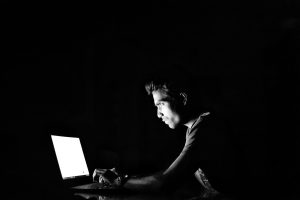
Lots of blue-rich light comes from LED-displays which we use in computers, tablets, eReaders, and smartphones. It has been shown in several studies that this can influence our sleep. One hour on a computer or e-reader significantly suppresses melatonin (Chang et al. 2015, Wood et al. 2013, Cajochen et al. 2011). One study even found a phase shift of 1.5 hours for the melatonin release (Chang et al. 2015). Using iPads can influence sleep quality. Half an hour is enough to delay the onset of deep sleep (slow wave sleep) by 30 minutes and reduce the activity of the delta waves (Grønli et al. 2016). In all these studies, participants were more alert in the evening, but tired in the morning.
Melatonin is not a simple “sleep hormone”. It controls the circadian rhythms and thus sleep as well as the release of a variety of hormones, but it has many more important functions. Melatonin is needed for growth and tissue regeneration, controls remodelling processes in our bones, protects our nerval system, is anti-flammatory, and anti-carcinogenic, activates our immune response and is a powerful antioxidant. Dispruptions of the melatonin rhythm have been linked to a number of diseases.
In the last years there has been a growing dicussion on light pollution and its impact on health, especially when light shines into the bedrooms. Sleep disorders, depression, cardiac diseases, obesity, diabetes type 2 as well as breast and prostate cancer have been discussed, since studies on
animal and shift workers have shown links for these with melatonin and sleep. Indeed, some epidemiological studies have shown correlations between light pollution and sleep disorders, depression, obesity, and breast/prostate cancer. These studies are mostly based on satellite data and therefore can not give information on the real amount of light experienced by a person. However, the fact that different studies have found similar correlations in different cultures might be a hint that light pollution does play a role here.

Light levels due to outdoor lights are in most cases too low to interfere with melatonin release. Nonetheless, there are studies showing correlations with brightness of bedrooms and with sleep. One study found that participants sleeping at 10 Lux had an increase in conjunctivitis, eye tiredness, soreness, difficulty in focusing, and ocular discomfort after only one night (Suh et al. 2018). In a Japanese cohort study, elderly people sleeping with 3.4 Lux had a 60% higher probability of sleep problems than those sleeping with 0.1 Lux (Obayashi et al. 2014). Comparison of satellite data from South Korea found an association with delayed sleep patterns, short sleep duration, habitual snoring, obesity, and the consumption of sleep-inducing drugs (Koo et al. 2016, Min et al. 2018).
Dim days, bright nights
But the loss of nocturnal darkness isn’t our only problem. Our circadian system relates to relative changes in light and dark. This is why twilight is an important information for synchronising our inner clock. On a sunny day, we can experience 100,000 Lux, even a cloudy day still measures with 1,000 Lux. Full moon give a brightness of less than 0.3 Lux, a clear, starry night leaves us with as little as 0.001 Lux. However, we don’t experience these changes anymore. Instead we spent our days in dim offices with less than 500 Lux and our evenings in dim rooms with about 50 Lux. Fitness studios in the evening are often brighter than offices during the day. Not the ideal situation for our internal time measurement.
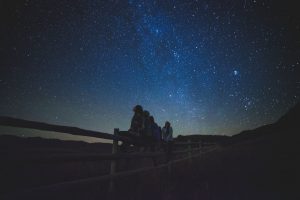
One study (Wright et al. 2013) compared melatonin levels and sleep patterns between normal city live and one week of camping without electrical light. During the camping trip, melatonin was released about two hours later than in the city, shortly after sunset. The campers hit the bed 1.2 hours earlier than before. Melatonin was released until shortly after sunset, but release stopped before the campers woke up.
This study confirmed earlier findings: We go to bed considerably later than
our ancestors, but we do not sleep longer in the morning. We need an alarm clock to get up because at this time, our melatonin levels are still too high. When we start work, our brain is not really ready for it, so we won’t perform at our best.
Chronotypes: about larks and owls
How much a person feels the strain of artificial light depends partly on the chronotype, which genetically determines our best times for sleep and activity. In western societies, we believe that the early bird catches the worm. However, only 20% of Germans are early risers, so called larks, the rest of us tends to be owls, which means their perfect working time is later in the day. Most owls have problems performing at their best during early work hours. Also, owls are most susceptible to blue light in the evening, so late night use of electric devices shifts their body rhythms even further back.
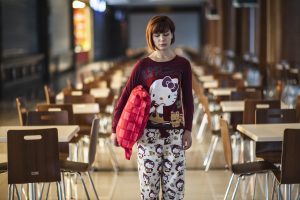
The consequence is a lack of sleep, which can lead to tiredness during the day, higher risk of errors, higher risks of diseses (including cardiac diseases, depression, and obesity), increased consumption of stimulants (coffee in the morning, sleeping pills at night) and even a higher risk to use harder drugs. Adolescents are at a specially high risk, since their natural onset of melatonin release is later in the evening than in adults. It doesn’t help to send them to bed earlier. Their body simply isn’t physiologically ready to go to sleep. The following morning they lack sleep, resulting in lower performance at school and in traffic. Additionally, teenagers are more sensitive to blue light from electronic devices than adults (Figueiro et al. 2016).
Another group that suffers from the current light situation are elderly people. The nocturnal melatonin level is reduced when we get older, so it would be helpful to get even stronger differences between bright days and dark nights. However, elderly people in hospitals or nursery homes get little sunlight during the day, while at night their rooms are illuminated by light from hallways. Several studies have shown that this has a negative influence on sleep quality, symptoms of dementia and overall medication (Wams et al. 2017).
So what can I do?
So how to tackle this problem? Here are a few tips that can help:
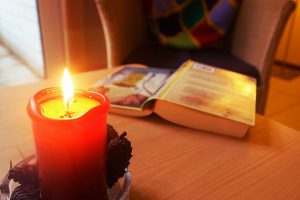
- Get as much sunlight during the day as possible, especially in the morning. You don’t need to sit in the glaring sun, a shady place is bright enough. Try to get natural daylight into your office and increase the brightness (but allow yourself shady moments, natural light is a very dynamic thing).
- Stay away from blue-rich light in the evening. If you use a computer, eReader or smartphone, install a blue filter software like f.lux. Be especially careful with children. Ideally, switch off all devices about two hours before you go to bed and instead switch on warm light, grab a book, cuddle your pet, or chat with your partner.
- Keep your bedroom as dark as possible, use blinds if necessary. If you need light at night, use LEDs with a colour temperature lower than 2200 Kelvin (so called “amber” or “vintage”). Their orange light has little impact on your melatonin.
- If you want a real treat, take a vacation in a really dark place, e.g. a Dark Sky Park, and watch the stars before you snuggle in.
References
Cajochen C, Frey S, Anders D, Spa¨ ti J, Bues M, Pross A, Mager R, Wirz-Justice A, Stefani O. Evening exposure to a light-emitting diodes (LED)-backlit computer screen affects circadian physiology and cognitive performance. Journal of Applied Physiology 2011; 110: 1432–1438.
Chang, A. et al., 2015. Evening use of light-emitting eReaders negatively affects sleep, circadian timing , and next-morning alertness. Proceedings of the National Academy of Sciences of the United States of America, 112(4), pp.1232–1237.
Grønli J, Byrkjedal IK, Bjorvatn B, Nødtvedt Ø, Hamre B, Pallesen S. Reading from an iPad or from a book in bed: the impact on human sleep. A randomized controlled crossover trial. Sleep Medicine 2016; 21: 86–92.
Koo YS, Song JY, Joo EY, et al. Outdoor artificial light at night, obesity, and sleep health: Cross-sectional analysis in the KoGES study. Chronobiol Int. 2016;33(3):301-314.
Figueiro M, Overington D. Self-luminous devices and melatonin suppression in adolescents. Light Res Technol. 2016;48(8):966-975.
Min J, Min K. Outdoor Artificial Nighttime Light and Use of Hypnotic Medications in Older Adults: A Population-Based Cohort Study. J Clin Sleep Med. 2018;14(11):1903-1910.
Obayashi K, Saeki K, Kurumatani N. Association between light exposure at night and insomnia in the general elderly population: The HEIJO-KYO cohort. Chronobiol Int. 2014;31(9):976-982. doi:10.3109/07420528.2014.937491.
Suh Y-W, Na K-H, Ahn S-E, Oh J. Effect of Ambient Light Exposure on Ocular Fatigue during Sleep. J Korean Med Sci. 2018;33(38):1-9.
Wood B, Rea MS, Plitnick B, Figueiro MG. Light level and duration of exposure determine the impact of self-luminous tablets on melatonin suppression. Applied Ergonomics 2013; 44: 237–240.
Wams, E.J. et al., 2017. Linking light exposure and subsequent sleep: A field polysomnography study in humans. Sleep, 40(12).
Wright, K.P. et al., 2013. Entrainment of the human circadian clock to the natural light-dark cycle. Current Biology, 23(16), pp.1554–1558. Available at: http://dx.doi.org/10.1016/j.cub.2013.06.039.
One Reply to “Light and sleep – or why we (usually) sleep at night”
Best article I read in recent weeks